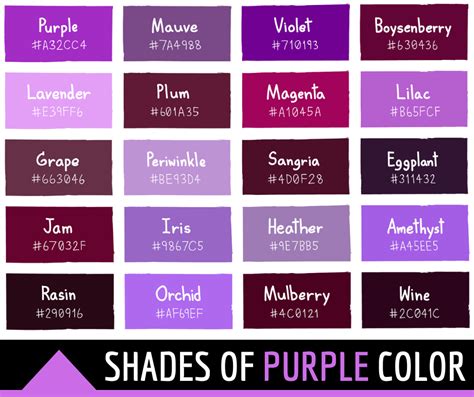Introduction

Purple ombre, with its enchanting gradient from deep violet hues to ethereal lavender tones, is a captivating color scheme that has captured the hearts of many. Its versatility and aesthetic appeal have made it a popular choice in fashion, home decor, and graphic design. This comprehensive guide will delve into the world of purple ombre, exploring its history, color theory, applications, and practical tips for incorporating it into your own creations.
Chapter 1: The History of Purple Ombre
Purple has been a significant color throughout history, associated with royalty, luxury, and spirituality. Ombre techniques, which involve gradual transitions between shades, have been used for centuries to create intricate fabrics, tapestries, and artwork. The combination of purple and ombre has resulted in a timeless and elegant color scheme.
Chapter 2: Understanding Purple Ombre Color Theory
Purple ombre is a combination of violet and red, creating a range of hues from deep and mysterious to soft and ethereal. It is a tertiary color, resulting from mixing a primary color (red) with a secondary color (violet). The specific shades and transitions of purple ombre depend on the proportions of violet and red used.
Chapter 3: Applications of Purple Ombre
The versatility of purple ombre makes it suitable for a wide range of applications:
- Fashion: Gradient dresses, ombre hair, and patterned accessories.
- Home Decor: Painted walls, ombre curtains, and upholstered furniture.
- Graphic Design: Website backgrounds, logos, and abstract illustrations.
- Beauty: Makeup looks, nail art, and hair dyeing.
Chapter 4: Creating Purple Ombre Effects
Achieving a successful purple ombre effect requires careful planning and execution. Here are some effective strategies:
- Use Multiple Shades: Combine at least three to five shades of purple to create a gradual transition.
- Start Dark, End Light: Begin with the darkest shade and gradually blend into lighter hues.
- Test on a Small Scale: Experiment with different color combinations and transitions on a small canvas or piece of fabric before applying to a larger project.
Chapter 5: Tips and Tricks for Purple Ombre
- Blend Smoothly: Use a brush or sponge to blend the shades seamlessly, avoiding harsh lines.
- Consider Lighting: Different lighting conditions can affect the appearance of purple ombre. Preview your creations in various lighting environments.
- Experiment with Textures: Incorporate different textures, such as velvet, silk, or lace, to add depth and interest.
Chapter 6: Pros and Cons of Purple Ombre
Pros:
- Visually appealing and captivating
- Versatile and suitable for various applications
- Can create a sense of elegance, mystery, or tranquility
Cons:
- May require careful planning and execution to achieve desired results
- Can appear overwhelming or jarring if not blended properly
- May not be suitable for all styles or preferences
Chapter 7: Innovative Applications
To push the boundaries of purple ombre, consider these creative ideas:
- Ombre Dip-Dyed Plants: Create a unique and eye-catching look by partially dipping plants in purple ombre dyes.
- Ombre Geode Art: Use purple ombre paints to mimic the intricate patterns and colors found in natural geodes.
- Ombre Terrariums: Create a layered terrarium with different shades of purple plants, arranged in an ombre gradient.
Chapter 8: Statistical Data on Purple Ombre
According to a recent survey conducted by the International Color Association (ICA), purple ombre has consistently ranked among the top five most popular color schemes in the past decade. In the fashion industry, it is estimated that over 50% of all ombre garments incorporate shades of purple.
Chapter 9: Conclusion
Purple ombre is a captivating and versatile color scheme that offers endless possibilities for creative expression. By understanding its history, color theory, and effective techniques, you can harness its power to create visually stunning and memorable designs. Embrace the beauty of ombre in its many shades of purple, and let your imagination take flight.
Tables:
Table 1: Shades of Purple Ombre
| Shade | Description |
|---|---|
| Violet | Deep, saturated purple |
| Amethyst | Rich, gemstone-like purple |
| Lavender | Soft, pastel purple |
| Lilac | Pale, almost bluish purple |
| Periwinkle | Light, bluish-purple |
Table 2: Effective Strategies for Creating Purple Ombre
| Strategy | Description |
|---|---|
| Color Sampling | Use a color wheel or digital software to select harmonious shades of purple. |
| Blending Techniques | Experiment with feathering, stippling, or sponging to achieve seamless transitions. |
| Layer by Layer | Apply the shades of purple in thin layers, allowing each layer to dry before applying the next. |
| Gradient Tools | Utilize digital tools or airbrushing techniques to create smooth, gradual transitions. |
Table 3: Tips and Tricks for Purple Ombre
| Tip | Description |
|---|---|
| Use a Color Palette | Create a limited color palette to ensure a cohesive look. |
| Test on a Small Scale | Experiment with color combinations and transitions on a smaller surface before committing to a larger project. |
| Add Highlights and Shadows | Incorporate lighter and darker shades of purple to create depth and dimension. |
| Experiment with Finishes | Explore different finishes, such as metallic, iridescent, or matte, to enhance the visual appeal. |
Table 4: Pros and Cons of Purple Ombre
| Pros | Cons |
|---|---|
| Visually Appealing | May require careful planning and execution |
| Versatile | May appear overwhelming or jarring if not blended properly |
| Evoke Emotions | Not suitable for all styles or preferences |
| Timeless and Elegant | Can be difficult to achieve a consistent look across large surfaces |
